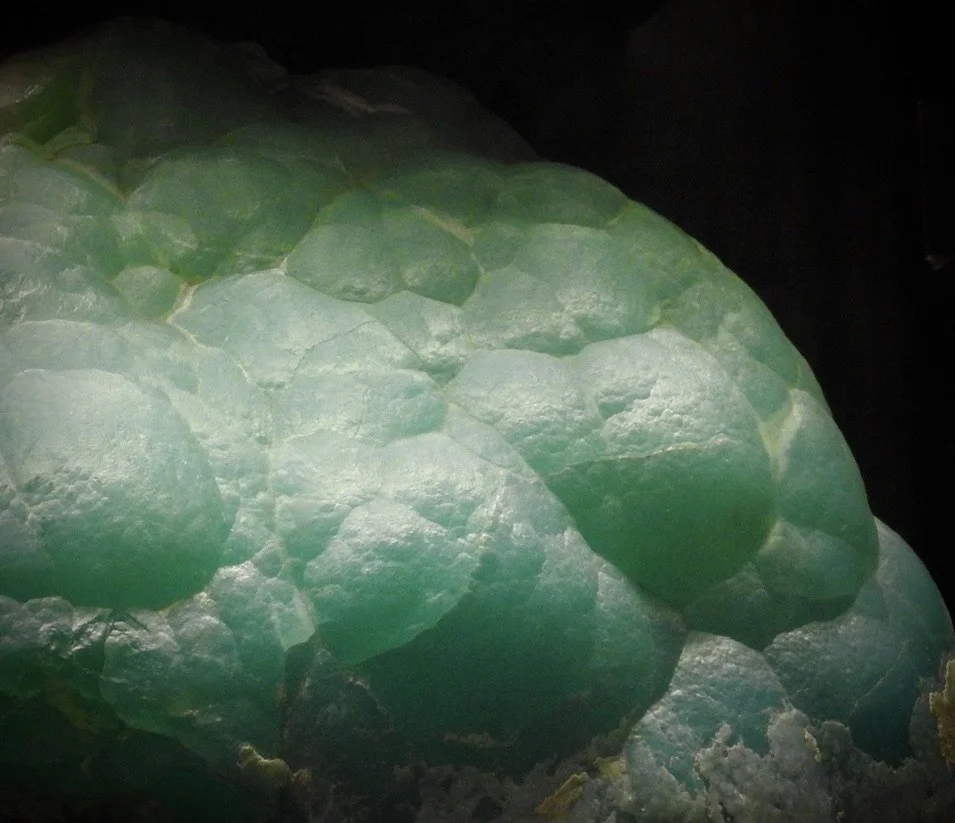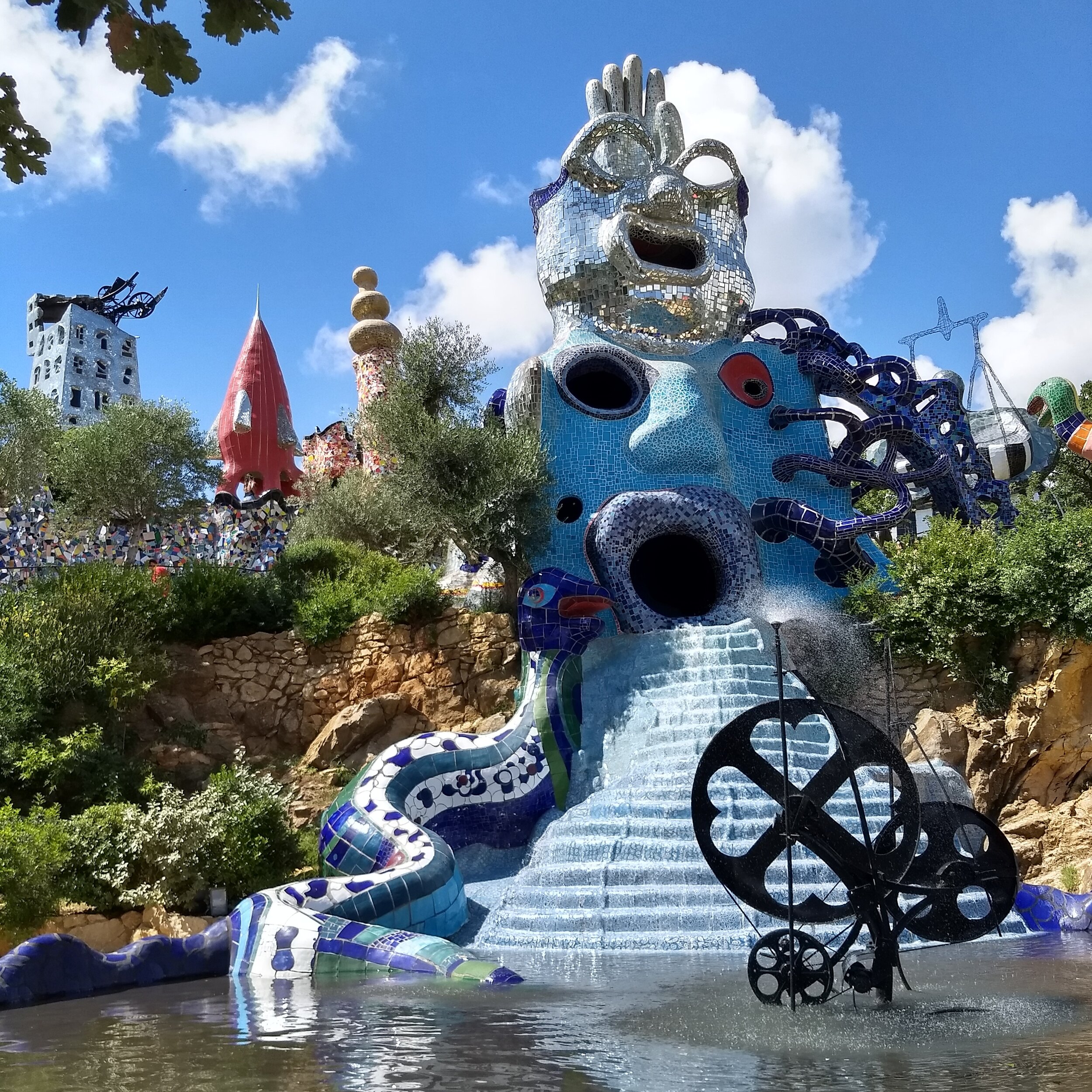Nestled within the gently rolling hills north of the Tuscany-Lazio border sits the last, most complex work of one of the twentieth century’s great artists.
Niki de Saint Phalle (1930–2002) began her Tarot Garden (Il Giardino dei Tarocchi) in the late seventies, opened it to the public in 1998, and continued to work on it until her death in 2002. As the name suggests, the park consists of a series of sculptures based on a deck of Tarot cards.
Typical of large-scale art, the physical objects were designed by de Saint Phalle but made in collaboration with many people, including her husband, Jean Tinguely, as well as local artisans. The final, widely-varied works include static figures-in-the-round, kinetic machines, fountains, and sculptural buildings. One of these—the giant, sphinx-like Empress—comes complete with a bed- and bathroom, which de Saint Phalle actually lived in while working on the Garden.
Even more impressive is the fact that most of the sculptures, including the largest of them, are covered in de Saint Phalle’s signature wonky mosaic. Many of these individual tiles are themselves hand-painted, hand-carved, or molded mini-sculptures. The park thereby engrosses visitors on several levels, its sculptures demanding to be appreciated from a distance, walked around, passed through, and examined up-close. This push-pull of audience engagement is further emphasized through the many mirrored surfaces, which literally make the park’s surroundings and visitors part of the works.
Sources and further reading:
Il Giardino dei Tarocchi official website.
Ariel Levy, “Beautiful Monsters: Art and Obsession in Tuscany,” The New Yorker (April 11, 2016), accessed March 3 and 6, 2020. [Highly recommended for greater insight into the life and mind that led to the massive yet idiosyncratic undertaking of the Tarot Garden.]
Portmobility Civitavecchia, “The Tarot Garden: Masterpiece of Niki de Saint Phalle.”








































